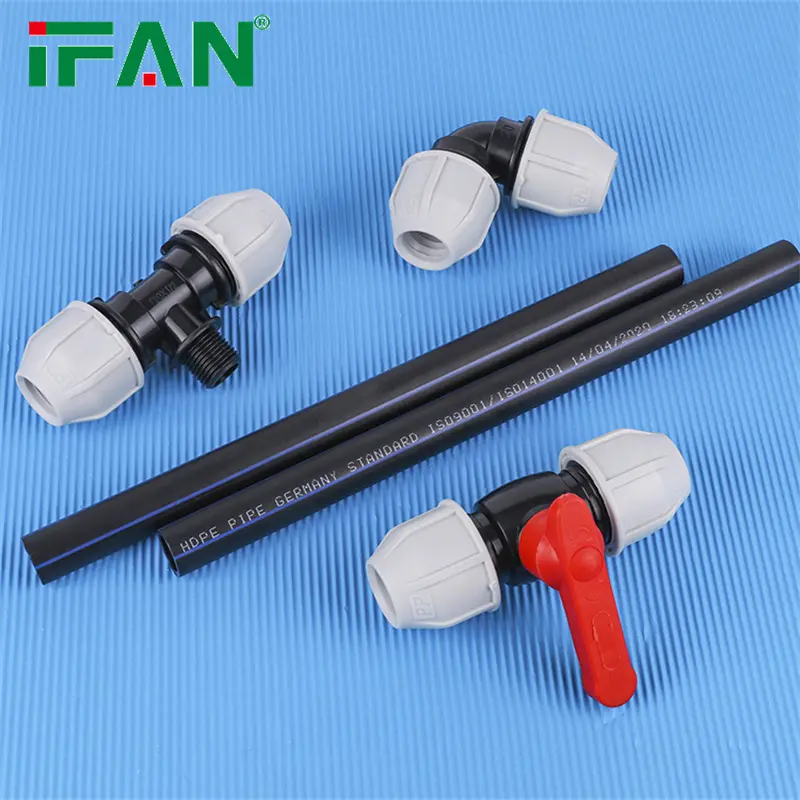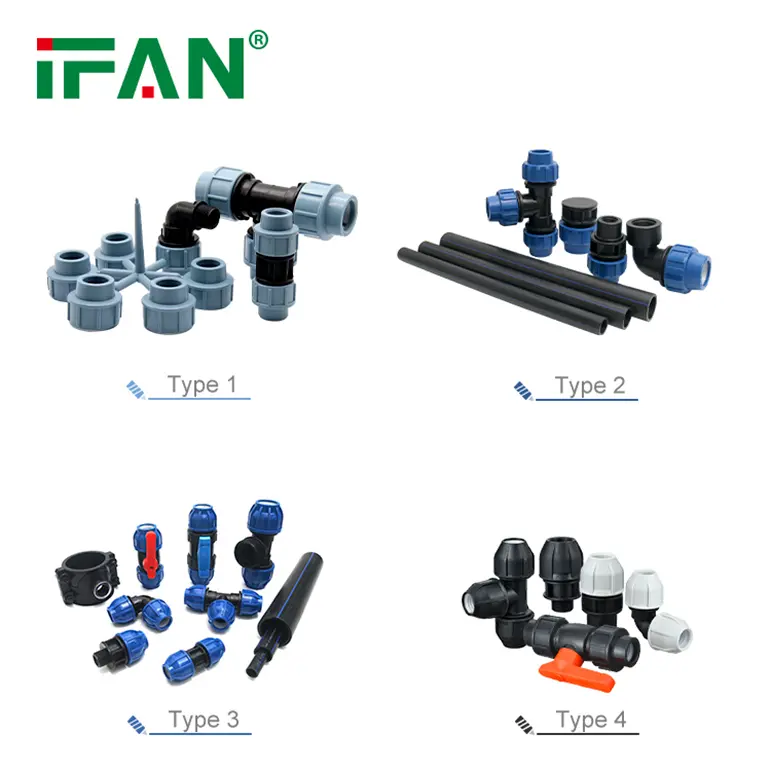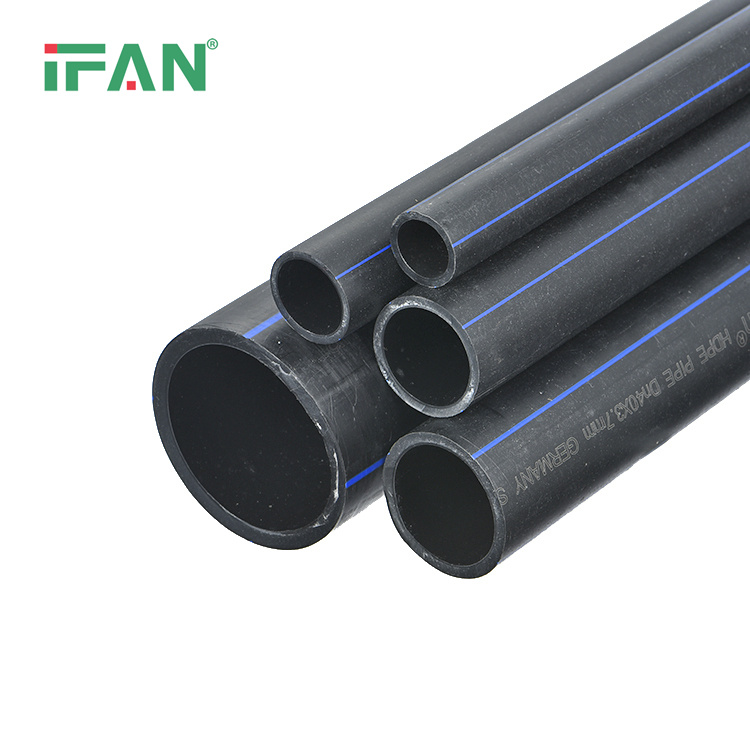High-Density Polyethylene (HDPE) pipes are known for their excellent wear resistance. This property makes them suitable for a wide range of applications, from water supply systems to mining operations. This article explores the wear resistance of HDPE pipes in detail, including the factors contributing to their durability, their performance in various conditions, and practical examples of their use.
Material Properties Contributing to Wear Resistance
HDPE is a thermoplastic polymer with high-density structure, which gives it superior wear resistance. Its molecular structure is characterized by strong intermolecular forces, contributing to its robustness. Unlike metals, which can corrode or degrade over time, HDPE remains stable under abrasive conditions. The smooth surface of HDPE pipes reduces friction and wear during operation. This makes them ideal for applications where the pipe is exposed to abrasive materials.
Impact of Smooth Surface on Wear Resistance
One key factor in the wear resistance of HDPE pipes is their smooth internal surface. The smoothness reduces friction between the pipe wall and the flowing fluid. This is particularly important in systems carrying slurries or other abrasive materials. For example, in mining operations where pipes transport mineral slurries, HDPE’s smooth surface helps to minimize abrasion and extend the pipe’s service life. The lower friction also improves the efficiency of fluid transport by reducing energy losses.
Comparison with Other Materials
When compared to other pipe materials such as metal or concrete, HDPE shows superior wear resistance. Metal pipes can suffer from corrosion and abrasion, especially when transporting abrasive substances. Concrete pipes, while durable, can experience surface wear and cracking. In contrast, HDPE pipes maintain their integrity over time, even under abrasive conditions. For instance, in agricultural irrigation systems where sand and silt are common, HDPE pipes outperform metal and concrete pipes in terms of wear resistance and longevity.
Performance in Abrasive Environments
HDPE pipes perform exceptionally well in environments where they are subjected to abrasion. The material’s ability to handle solid particles without significant wear is a major advantage. For example, in wastewater treatment plants where pipes carry sewage mixed with grit and other solid materials, HDPE pipes exhibit minimal wear and maintain their functionality over long periods. This performance is crucial for ensuring consistent operation and reducing maintenance needs in such challenging environments.
Effect of Temperature on Wear Resistance
Temperature can affect the wear resistance of HDPE pipes. HDPE retains its wear resistance properties across a wide temperature range, typically from -40°C to 60°C (-40°F to 140°F). However, extreme temperatures can impact the material’s performance. At high temperatures, the pipe may become softer and more susceptible to wear, while at low temperatures, it may become more brittle. For example, in geothermal applications where temperatures can be elevated, HDPE pipes are engineered to handle such conditions without significant wear. Ensuring that the pipe is used within its recommended temperature range is essential for optimal performance.
Installation and Handling Practices
Proper installation and handling practices are important to maintain the wear resistance of them. During installation, care must be taken to avoid damaging the pipes. Sharp objects or improper handling can cause scratches or abrasions that may affect the pipe’s performance. For instance, when installing HDPE pipes in a mining operation, it is crucial to use appropriate equipment and techniques to avoid introducing defects that could reduce wear resistance. Regular inspections during and after installation help ensure that the pipes remain in good condition and perform optimally.
Maintenance Requirements
HDPE pipes generally require minimal maintenance due to their high wear resistance. Regular inspections help to identify any potential issues before they become serious problems. In abrasive environments, monitoring the condition of the pipes is particularly important. For example, in a sand and gravel transport system, periodic checks for signs of wear can help to address any issues early and ensure the system remains efficient. Routine cleaning to remove any accumulated debris can also help maintain the pipe’s performance.
Case Studies and Examples
Several real-world examples highlight the wear resistance of them:
1. Mining Industry: In the mining industry, HDPE pipes are used to transport mineral slurries and other abrasive materials. The pipes endure high levels of wear due to the constant movement of abrasive particles. HDPE’s wear resistance ensures that the pipes have a long service life, reducing the frequency of replacements and maintenance.
2. Agricultural Irrigation: In agricultural irrigation systems, HDPE pipes are employed to distribute water mixed with sand and silt. The pipes’ ability to withstand abrasion from these particles ensures that the irrigation system operates efficiently and requires less frequent repairs.
3. Wastewater Treatment: In wastewater treatment plants, HDPE pipes carry sewage and grit. The material’s resistance to abrasion helps to prevent blockages and pipe failure, ensuring reliable operation and reducing maintenance costs.
Challenges and Limitations
While HDPE pipes are highly wear-resistant, they are not immune to all types of wear and damage. Extremely abrasive conditions, such as those involving very coarse particles or high-velocity flows, can still cause wear over time. Additionally, improper installation or handling can introduce defects that compromise the pipe’s wear resistance. Ensuring that HDPE pipes are used and maintained according to manufacturer recommendations helps to mitigate these risks.
Technological Advancements
Recent advancements in HDPE technology have further enhanced the wear resistance of these pipes. Innovations include the development of HDPE composites and the incorporation of additives that improve abrasion resistance. These advancements ensure that HDPE pipes continue to perform effectively in increasingly demanding applications. For example, HDPE pipes with enhanced abrasion-resistant coatings are being developed for use in highly abrasive environments, extending their service life and performance.
Conclusion
HDPE pipes are renowned for their excellent wear resistance, which is a key factor in their effectiveness and longevity. Their smooth surface, durability, and performance in abrasive environments make them suitable for a wide range of applications, from mining and agriculture to wastewater treatment. While they offer significant advantages over other materials, proper installation, handling, and maintenance are crucial to maximizing their wear resistance. Continued advancements in HDPE technology ensure that these pipes remain a reliable choice for demanding applications, offering both durability and efficiency.
If you have read this article and have any questions, please feel free to contact IFAN. Below is our contact information:
Whatsapp:+86 13373827623
Email:[email protected]























































